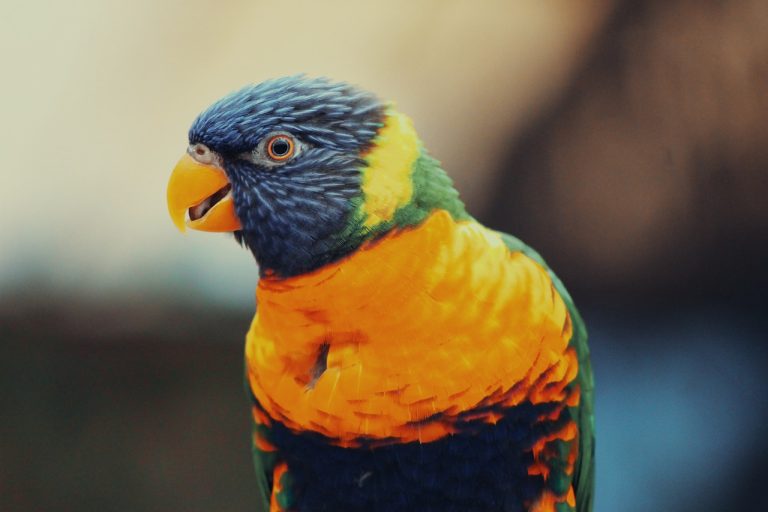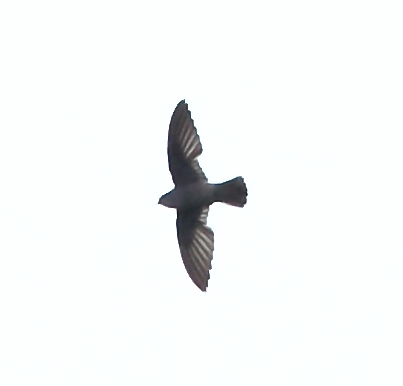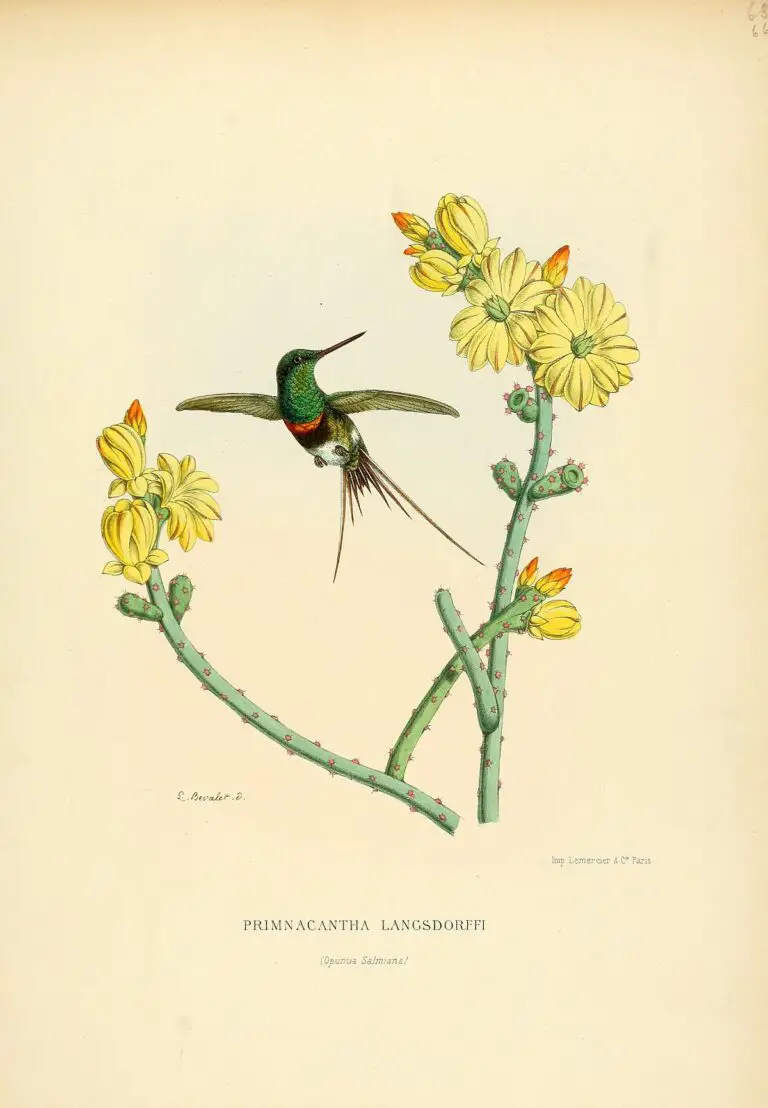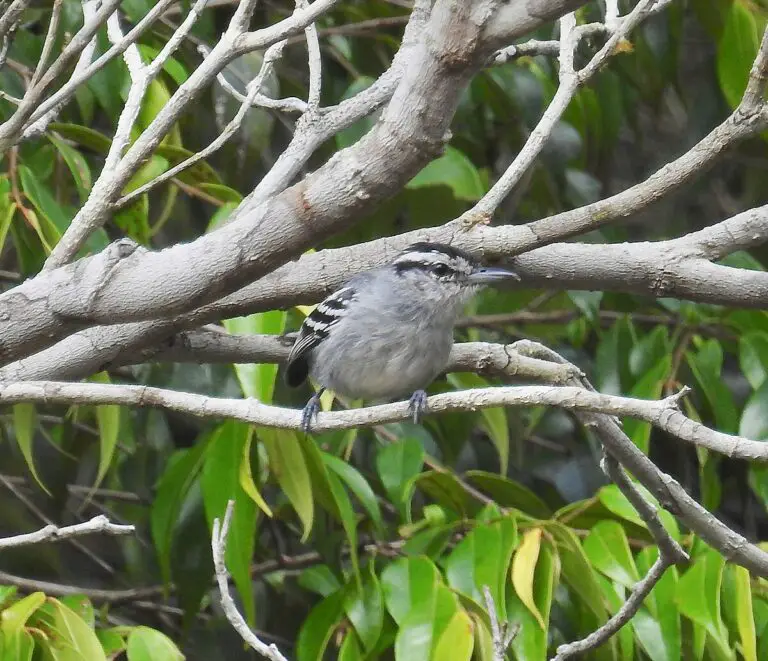Rufous Hummingbird (Selasphorus rufus)
“The males have a glowing iridescent orange patch on their chests.”
The scientific classification of the Rufous Hummingbird is as follows:
- Kingdom: Animalia
- Phylum: Chordata
- Class: Aves
- Order: Apodiformes
- Family: Trochilidae
- Genus: Selasphorus
- Scientific Name: Selasphorus rufus
In terms of conservation, the Rufous Hummingbird is listed as “Near Threatened.” They are primarily found in North America.
Rufous Hummingbird facts:
- Prey: Rufous Hummingbirds primarily feed on some insects.
- Group Behavior: They usually lead solitary lives or form pairs.
- Fun Fact: Male Rufous Hummingbirds sport a striking iridescent orange patch on their chests.
- Biggest Threat: Their main threat comes from the loss of habitat and food due to climate change.
- Most Distinctive Feature: Their reddish-orange coloring stands out prominently.
- Incubation Period: Eggs typically hatch after about 2 weeks of incubation.
- Age of Independence: Rufous Hummingbirds become independent around 3 weeks after hatching.
- Predators: They face threats from snakes, larger birds, and other animals.
- Diet: Rufous Hummingbirds are omnivores, but they particularly enjoy red flowers.
- Favorite Food: Red flowers are among their preferred food sources.
- Special Features: Besides their distinctive coloring, male Rufous Hummingbirds also boast an iridescent orange patch on their chests.
- Number Of Species: There’s only one species of Rufous Hummingbird.
- Location: They are mainly found in North America.
- Nesting Location: Rufous Hummingbirds build their nests in trees and shrubs.
- Migratory: Yes, they undertake migrations.
- Physical Characteristics:
- Color: They display various colors such as red, white, green, and orange, often appearing multi-colored.
- Skin Type: Their bodies are covered in feathers.
- Length: Rufous Hummingbirds measure between 2 to 3 inches in length.
- Age of Weaning: They typically wean their young in less than 1 month.
- Venomous: Rufous Hummingbirds are not venomous.
- Aggression: They exhibit medium levels of aggression.

The Rufous Hummingbird is truly a marvel of nature, boasting brilliant coloring and incredible migratory feats. This tiny bird can embark on a remarkable journey, traveling all the way from Alaska to Mexico in a single migration, showcasing its endurance and adaptability.
As one of nine species within its genus, the Rufous Hummingbird derives its name from the striking reddish-orange hues that adorn the heads and chests of most males. This distinctive coloring adds to its allure and makes it easily recognizable among other hummingbird species.
These charming birds have a penchant for red-colored flowers, which they frequent for nectar. However, they also supplement their diet with insects, showcasing their versatility as omnivores. This dietary flexibility likely contributes to their ability to thrive in various environments along their migratory route.
The Rufous Hummingbird’s lifestyle and characteristics offer a fascinating glimpse into the intricate workings of nature. Studying these remarkable creatures provides insights into the interconnectedness of ecosystems and the importance of preserving their habitats for generations to come.
Rufous Hummingbird Insteresting Facts
The Rufous Hummingbird has a rich history, having been discovered and named in 1788. Interestingly, it serves as the type species for its genus, Selasphorus, highlighting its significance in the scientific community.
When it comes to migration, these hummingbirds undertake an impressive journey from the northern United States and Canada all the way down to Mexico. Their migratory patterns demonstrate their remarkable ability to adapt to changing seasons and climates.
Female Rufous Hummingbirds exhibit resourcefulness in nesting habits. They can recycle and revamp old nests, using materials like grass, moss, and soft plants to create a snug environment for their eggs. This behavior showcases their ingenuity in maximizing resources for reproductive success.
Feeding is a spectacle to behold for Rufous Hummingbirds. They employ rapid wing beats to hover in place while they extract nectar from flowers using their long tongues. This unique feeding strategy reflects their specialized adaptation to their environment and dietary preferences.
Unfortunately, despite their agility and speed, Rufous Hummingbirds face threats from predators like snakes. These predators pose a danger to these delicate birds, emphasizing the challenges they encounter in their natural habitat.
Where To Find The Rufous Hummingbird
The Rufous Hummingbird is a native inhabitant of North America, ranging from the northern reaches of Alaska down to Mexico. During the spring and summer months, they breed in Alaska and the western regions of Canada and the United States. This period provides ample opportunities for them to utilize native wildflowers as a dependable food source, aiding in their reproductive success.
As the colder seasons approach, Rufous Hummingbirds embark on an astonishing journey spanning nearly 4,000 miles to migrate to various parts of Mexico. This migration is essential for their survival, as they require a warm climate to endure the winter months. Unlike some other species, they cannot withstand the harsh conditions of the northern parts of the continent during this time.
This migratory behavior showcases the Rufous Hummingbird’s remarkable adaptability and resilience, as they navigate vast distances to seek out suitable habitats and resources. It also underscores the importance of preserving diverse ecosystems along their migratory routes to ensure their continued survival and well-being.

Scientific Name
The Rufous Hummingbird, scientifically known as Selasphorus rufus, holds a significant place within the Selasphorus genus, which was established in 1832. This genus comprises nine distinct species, with the Rufous Hummingbird serving as the type species. Interestingly, when first described in 1788, it was classified within the Trochilus genus, alongside other hummingbird species.
Belonging to the Trochilidae family, which encompasses all hummingbirds totaling around 360 species, the Rufous Hummingbird is emblematic of this diverse avian family. These remarkable birds are renowned for their unique ability to hover and feed on nectar, though they also supplement their diet with insects. The name “hummingbird” stems from the distinctive humming sound produced by their rapid wing beats during hovering.
Hummingbirds are classified within the Apodiformes order of birds, a group that includes Swifts and Treeswifts. This order is noted for its diversity, comprising over 450 species. Furthermore, hummingbirds are part of the broader Aves class, which encompasses all birds. Birds are characterized by specific features such as feathers, toothless beaks, a four-chambered heart, a high metabolism, and a lightweight skeleton. Reproduction in birds involves the laying of eggs.
Taxonomically, hummingbirds are classified within the Chordata phylum and the Animalia kingdom, highlighting their position within the broader spectrum of animal life. This classification system provides insight into the evolutionary relationships and unique characteristics of these captivating creatures.
History And Evolution
The Rufous Hummingbird, native to North America, is part of a broader lineage of hummingbirds that traces its origins back to Europe around 42 million years ago. At that time, they began to diverge from their closest living relatives, the swift. Evidence of this ancient lineage includes the discovery of the oldest known hummingbird fossil in southeast Germany, dating back approximately 30 to 35 million years.
Despite their origins in Europe, this early species of hummingbird eventually became extinct in that region, leaving behind a mystery as to the cause of its demise. However, these remarkable birds persisted and eventually migrated to the Americas, where they flourished and diversified into the diverse array of hummingbird species we see today.
The modern hummingbird as we know it began to evolve in the Americas approximately 22 million years ago. This evolutionary journey highlights the resilience and adaptability of these birds, as they traversed continents and adapted to new environments over millions of years. Today, hummingbirds continue to captivate us with their aerial acrobatics, vibrant plumage, and unique ecological roles in their native habitats.

Types Of Rufous Hummingbird
The Rufous Hummingbird belongs to the Selasphorus genus, which comprises eight other fascinating species:
- Allen’s Hummingbird (Selasphorus sasin): Found along the coastal regions of California, southern coastal Oregon, and southern central Mexico.
- Glow-throated Hummingbird (Selasphorus ardens): Resides in western Panama.
- Wine-throated Hummingbird (Selasphorus ellioti): Inhabits regions of El Salvador, Guatemala, Honduras, and Mexico.
- Calliope Hummingbird (Selasphorus calliope): Found from California to British Columbia, migrating to the Southwest United States and Mexico.
- Bumblebee Hummingbird (Selasphorus heloisa): Native to Mexico.
- Broad-tailed Hummingbird (Selasphorus platycercus): Found across western Canada, western United States, Mexico, and Guatemala.
- Volcano Hummingbird (Selasphorus flammula): Inhabits Costa Rica and Panama.
- Scintillant Hummingbird (Selasphorus scintilla): Resides in Costa Rica and Panama.
Each of these species boasts its own unique characteristics, behaviors, and habitats, contributing to the remarkable diversity of hummingbirds within the Selasphorus genus.
Size, Appearance, And Behavior
Rufous Hummingbirds may be small in stature, measuring around three inches in length, but they serve as a captivating example of these enchanting creatures. While they aren’t the tiniest of all hummingbirds, they epitomize the fascinating traits of this bird family.
Among their distinguishing features, the males stand out with their vibrant coloring. Their faces are adorned with a striking reddish-orange hue, which inspired their name, “Rufous.” Additionally, they boast white breasts and sport an iridescent orange patch on their throat. This patch is described in the Audubon Society Guide to North American Birds as “glowing like a copper penny.” This radiant feature aids birdwatchers in spotting Rufous Hummingbirds more easily, though it’s important to note that this distinctive coloring is unique to the males.
Overall, these tiny yet resplendent birds captivate observers with their dazzling appearance and agile movements, making them a cherished sight for bird enthusiasts and nature lovers alike.
In addition to their striking reddish-orange and iridescent orange coloring, some male Rufous Hummingbirds may exhibit green hues on their backs or at the crown of their heads, adding further variation to their appearance. Meanwhile, females of the species typically display more green coloring and are slightly larger in size compared to their male counterparts.
Interestingly, the resemblance between female Rufous Hummingbirds and Allen’s Hummingbirds is notable. Both species share similar habitats and geographic ranges, leading to occasional confusion between the two. This similarity in appearance can pose a challenge for birdwatchers seeking to differentiate between them, highlighting the importance of careful observation and attention to detail in identifying these exquisite birds.
Despite these similarities, each species possesses unique traits and behaviors that distinguish them within the diverse tapestry of hummingbird species inhabiting their shared environments. Such intricacies contribute to the rich tapestry of biodiversity present in the habitats they call home.

Diet
The Rufous Hummingbird, like its counterparts, sustains itself primarily by feeding on nectar extracted from flowers. Equipped with a lengthy proboscis and tongue, it adeptly accesses the sweet nectar concealed deep within the intricate structures of flowers. Additionally, Rufous Hummingbirds supplement their diet by catching insects mid-flight, a testament to their agile hunting abilities.
These tiny aviators exhibit a preference for red-hued flowers, drawn to blooms such as penstemons, red columbines, paintbrush, scarlet sage, and gilia. This affinity for red blossoms aligns with their keen visual perception of color, making these flowers particularly appealing food sources.
During feeding sessions, Rufous Hummingbirds showcase their remarkable aerial prowess by hovering in mid-air using their rapid wing beats. Employing a specialized flight technique, they generate lift more efficiently during downstrokes compared to upstrokes. While they predominantly hover during feeding, when presented with sugar solutions at hummingbird feeders, they do take advantage of opportunities to perch. This behavior allows them to conserve energy, although they do not remain perched for extended periods.
Overall, the feeding habits of the Rufous Hummingbird highlight its remarkable adaptations for extracting nourishment from its environment, showcasing the ingenuity and agility characteristic of these captivating birds.
Predators And Threats
The diminutive size of Rufous Hummingbirds renders them vulnerable to predation by larger birds and animals, with snakes being particularly adept at capturing these swift flyers.
In addition to predation, Rufous Hummingbirds face threats stemming from alterations to their habitats and food sources. The use of pesticides can disrupt the delicate balance of insect populations, which constitute a crucial component of their diet. While they aren’t selective about the types of insects they consume, a reliable supply is essential for their survival.
Furthermore, changes in the timing of flowering plants can pose challenges for Rufous Hummingbirds. Early blooming may result in a mismatch between the availability of nectar-rich flowers and the arrival of migrating hummingbirds. If their food sources have already bloomed and withered by the time they reach their destination, Rufous Hummingbirds may struggle to obtain sufficient nourishment, thereby compromising their ability to sustain themselves during migration.
These threats underscore the importance of preserving habitats and ecosystems that support Rufous Hummingbirds and other wildlife. By mitigating human-induced disturbances and promoting conservation efforts, we can help ensure the continued survival and well-being of these remarkable avian species.
Reproduction, Babies, And Lifespan
Like all birds, Rufous Hummingbirds engage in the remarkable process of reproduction, which includes laying eggs. Female Rufous Hummingbirds take great care in selecting suitable nesting sites, often choosing trees and shrubs that offer protection and concealment from predators. To enhance camouflage, they incorporate moss into the nest structure, helping it blend seamlessly into its surroundings. Additionally, they may repurpose old nests, fortifying them with additional materials such as grass, moss, and plant matter to ensure sturdiness and comfort.
During the breeding season, males engage in courtship rituals and may mate with multiple females. Once mating occurs, the females assume the responsibility of caring for the eggs until they hatch, a process that typically takes around two weeks. Throughout this period, females diligently incubate the eggs, providing warmth and protection to ensure successful development.
After hatching, the female Rufous Hummingbirds continue to play a vital role in nurturing their offspring. They feed the young hummingbirds with regurgitated nectar and insects until they reach maturity. Typically, young hummingbirds leave the nest and begin flying at around three weeks of age, marking an important milestone in their development.
During the breeding season, Rufous Hummingbirds predominantly inhabit the Pacific Northwest, including regions of Oregon, Washington, and Canada. While they can venture as far north as Alaska, they are less common in this area, with their distribution primarily concentrated in the temperate climates of the Pacific Northwest.
This cycle of reproduction and nurturing underscores the resilience and adaptability of Rufous Hummingbirds, as they navigate the challenges of parenthood amidst the dynamic rhythms of their natural habitats.

Population
Concerns over the declining Rufous Hummingbird population have garnered attention from scientists and conservationists alike. While not yet classified as endangered, the International Union for Conservation of Nature raised alarm by upgrading its status to Near Threatened in 2018. This decision was prompted by worrisome trends in population numbers and observations.
Data from the Nature Conservancy Canada paints a stark picture, suggesting that Rufous Hummingbird numbers have plummeted by as much as 60% since the mid-1960s. This significant decline underscores the urgency of addressing the factors contributing to their dwindling numbers.
Climate change emerges as a primary threat to the Rufous Hummingbird population. As migratory birds, they rely on the cyclical patterns of seasons to regulate their nesting behaviors and ensure the availability of food sources. However, disruptions to these natural rhythms, such as shifts in temperature and habitat suitability, pose formidable challenges for these resilient creatures. The repercussions of these changes can reverberate throughout the Rufous Hummingbird population, with potentially devastating long-term consequences.
Efforts to mitigate the impacts of climate change and preserve crucial habitats are essential for safeguarding the future of the Rufous Hummingbird and other vulnerable species. By addressing these pressing issues and implementing conservation strategies, we can strive to ensure a brighter, more sustainable future for these captivating birds and the ecosystems they inhabit.
Similar Birds To The Rufous Hummingbird
Allen’s Hummingbird, scientifically known as Selasphorus sasin, shares close kinship with the Rufous Hummingbird and exhibits similar vibrant coloring. However, Allen’s Hummingbird tends to be more localized, predominantly found in the vicinity of California, with a more restricted geographic range compared to its Rufous counterpart.
Meanwhile, the Ruby-throated Hummingbird, scientifically named Archilochus colubris, is distinguished by its striking patch of ruby-colored feathers adorning its throat. This distinctive feature makes it readily identifiable. While it inhabits climates akin to those favored by the Rufous Hummingbird, the Ruby-throated Hummingbird also migrates to the Eastern United States for breeding purposes, expanding its range beyond the typical habitats of the Rufous Hummingbird.
Despite their shared characteristics and ecological preferences, each of these hummingbird species possesses unique traits and behaviors that contribute to the rich tapestry of biodiversity within their respective habitats.
Conclusion
The Rufous Hummingbird is a captivating symbol of resilience and adaptability within North America’s avian community. Its striking coloring, remarkable migratory journeys, and intricate ecological relationships underscore its significance in both scientific research and conservation efforts. Despite facing challenges such as habitat loss and climate change, the Rufous Hummingbird serves as a poignant reminder of the delicate balance between human activities and the natural world. Through concerted conservation measures and public awareness, we can work to ensure the continued survival and well-being of this enchanting species for generations to come.





